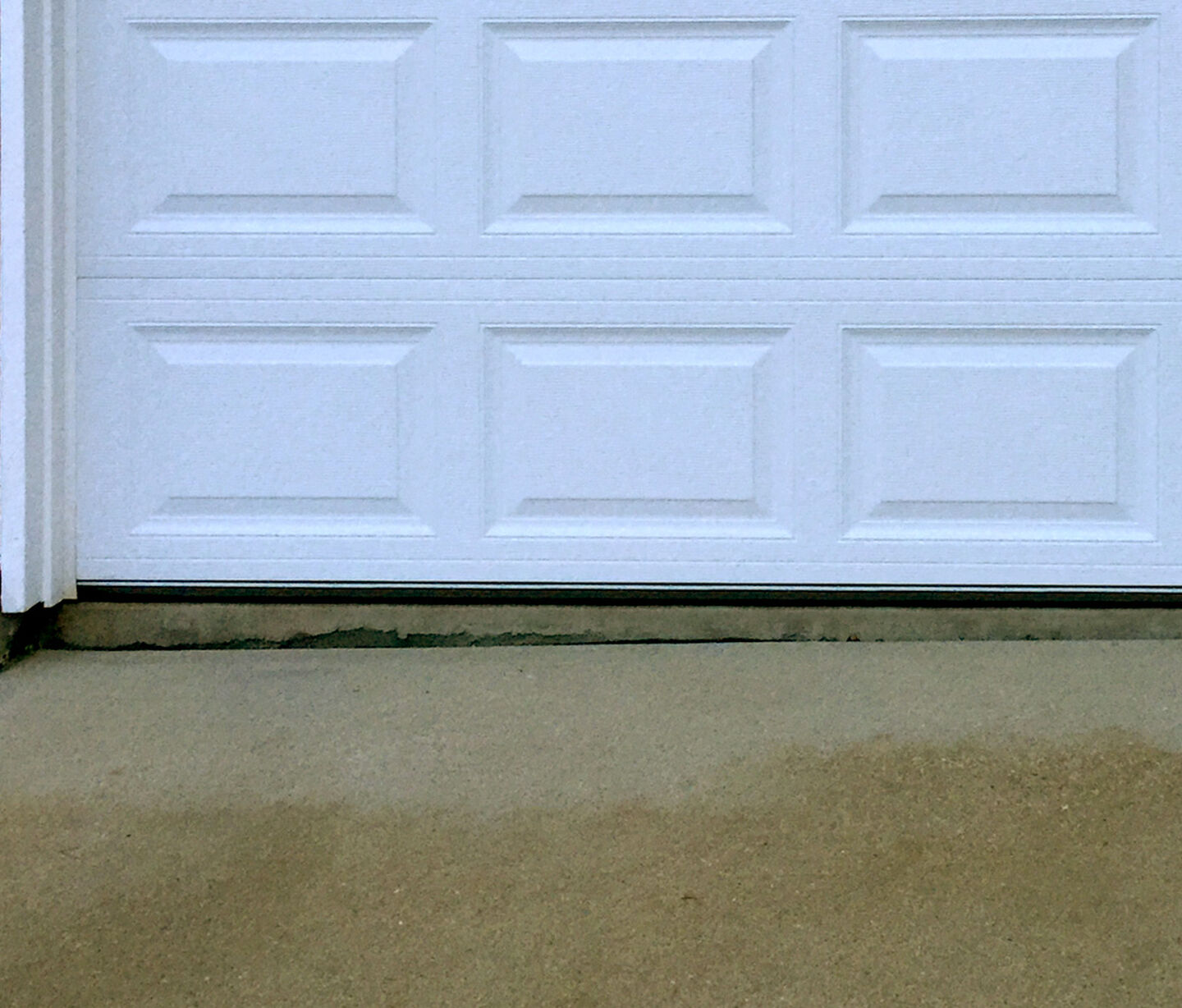How To Repair A Sinking Concrete Driveway

Living in Chicagoland presents some challenges if you have a poured concrete driveway. With the soil being mainly clay and the extreme weather and temperature fluctuations, the ground around your property is constantly in a state of movement. In the wet seasons your soil swells, during dry times it cracks and shrinks and in the winter it freezes and heaves. If we had a time-lapse video of your home taken over a year, the constant expansion and contraction of the soil would make it look like the ground was breathing.
This constant movement is not a problem if your ground is covered with something like grass or stones that can naturally ride these waves. However, when rigid concrete is poured on top of this constantly shifting ground, it’s destined to crack and sink, leaving you with an unsightly concrete driveway.
Cracked and sunken driveways can present a variety of problems. Driveways pitched toward the house cause rain water to be directed toward the foundation. This excessive water causes basement seepage and structural issues if not corrected quickly. Also, cracks in the driveway allow more water to get underneath the concrete promoting further sinking and the misaligned sections can cause tripping hazards.
Options For Repairing Your Sinking Concrete Driveway
As you read through these options keep in mind these are weather-dependent repairs that can’t typically be done in the colder winter months when there is frost on the ground.
REPLACEMENT
The traditional way to fix a sunken concrete driveway is to break up the old one and pour a new one. This may seem like the most straight forward way to repair it, but new technologies for raising concrete have significantly reduced the need for you to go to this extent or contend with the downsides of this old-school option. Some of those downsides include: the much higher cost to replace versus the minimally invasive approaches now available; the time and cost to secure permits and have it inspected; the lack of driveway use until the concrete sufficiently cures; the inevitable damage to landscaping and the likelihood that after all that pain, money and disruption, the new concrete may still sink like the old driveway did.
MUDJACKING
Another way to raise your sinking driveway is to do mudjacking. Developed in the early 1900s as an alternative to replacing sinking concrete, it’s the process of forcing wet material under the concrete to raise it. This process gets its name from the fact the original material used was mud. Over time cement and rock were added to the mix in an attempt to make it more durable. While the price is attractive compared to a full replacement of the driveway, mudjacking does have some negatives: there’s no real formula for mixing ‘mud’ so the results are inconsistent; the driveway will have soda-can-sized holes cored into them where the injections are done; the mud adds even more weight to the area under the driveway; and the water based mud mixture can be eroded over time by ground water.
POLYURETHANE CONCRETE RAISING
Polyurethane has been around since the late 1930s. Most recently it’s being used in construction because its expansion properties provides great strength for controlled pavement lifting. Its stability helps it to be a long-term solution and its durability is attractive in situations where it will be exposed to the elements. This is why modern concrete raising has turned to it for raising sunken concrete driveways. It has many benefits with no real downside. It’s less expensive than replacing concrete, extremely lightweight, considerably more durable and stable than mud and the injection holes are the size of a penny. Curing time is also substantially less than concrete or mud so the driveway can be used with a few hours of completing the work. If you’d like to read more about concrete raising here’s a comparison between polyurethane concrete raising and mudjacking. Or you can watch a video on our concrete raising process to get a better idea of how the process works.
There are your three options for repairing your sinking driveway. Feel free to contact us if you would like a free estimate on the last option — polyurethane concrete raising. We have the experience and expertise to handle this kind of heavy lifting when your concrete driveway needs to be raised.




